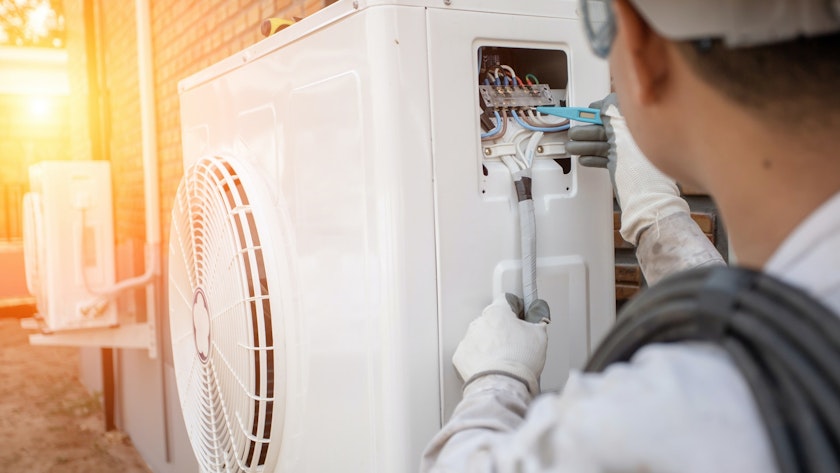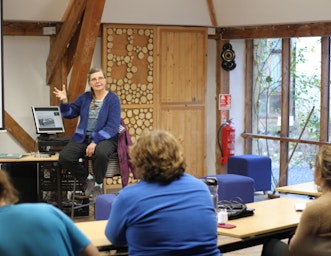
As gas bills soar and the need for climate action becomes more urgent by the day, measures to reduce our heating needs and switch away from fossil fuel heating are more important than ever. Joel Rawson runs through recent changes to financing home heating upgrades and some things to bear in mind to make installing and running a heat pump straightforward.
Heat pumps are a sustainable heating solution that offers longterm carbon and energy savings, with emissions about 80% lower than from a gas boiler. With many of us living in houses that were built long before awareness of the climate emergency and energy efficiency, retrofitting buildings with the latest heat pump technology needs investment and some planning.
Government support in the UK and across Europe for developing the heat pump industry should eventually lead to reduced costs, as happened with solar photovoltaic (PV) technology. But for now, moving to heat pumps and high levels of insulation does require investment.
So, if you’re a homeowner, what funding is available to you and what should you consider before joining the heat pump revolution?
Catch the BUS
The new Boiler Upgrade Scheme (BUS) has replaced the Renewable Heat Incentive (RHI) and is due to run for the next three years (the name is a change from the proposed Clean Heat Grant). It covers England and Wales – with Home Energy Scotland offering different funding.
Now, homeowners should need to do very little, because the installer claims the grant and subtracts it from their quote. You still need to choose from installers accredited under the Microgeneration Certification Scheme (MCS), and it’s worth getting a few quotes to compare. Ofgem runs the scheme and will contact you to confirm that you agree to any work going ahead.
Biomass heating is only funded in rural areas without mains gas. For this, rural means anywhere other than settlements of more than 10,000 people (defined by an Office for National Statistics tool).
As a fixed amount, the grant covers more of the cost of a smaller heat pump, whereas for a larger heat demand it’s probably going to give much less than the RHI did. The new grant is less attractive for ground source heat pumps, as the RHI offered a much more generous rate. And solar water heating is no longer funded.
Share the warmth
For some dense housing, finding space for an air collector might be tricky. Instead, shared heating may work well for small terraces or blocks of flats; for example, one borehole shared by several homes, each with their own internal heat pump unit to upgrade the heat. The BUS covers shared ground loops, but only up to total of 45kW – perhaps five to 10 homes.
Developers of larger heat networks (for hundreds of homes) can apply to the ‘Green Heat Network Fund’ for financial support. One new heat network is using old coal mines near Gateshead as the source (about 15°C) for a large heat pump, with the potential to heat thousands of homes.
Insulate for the future
You don’t necessarily need high levels of insulation for a heat pump to work well. However, insulation and other measures to reduce energy demand enable us to reach a zero carbon grid much more easily and quickly. To cut carbon and running costs we need to do more than just replace boilers with heat pumps on a like-for-like basis.
At present, a well-designed heat pump can have running costs similar to a gas boiler for the same heat demand. The balance would tip in favour of heat pumps if changes were made to the way levies are applied to energy bills. These levies fund useful programmes but are almost all added to electricity bills rather than gas – making the comparative running costs of a heat pump slightly worse than it should be. But ultimately, the main way to reduce bills is to cut heating demand.
Save your energy
Unlike the heat pump grant, support for insulation and other energy saving measures is mostly means tested.
In England, there’s support for households with a gross annual income less than about £30,000 who own or privately rent a house with an EPC rating of D or worse. This ‘Sustainable Warmth’ programme combines the ‘Local Authority Delivery Phase 3’ for homes with mains gas and the ‘Home Upgrade Grant Phase 1’ for those without. Your local authority will have details of how to apply for this funding in your area.
In Wales, the Nyth/Nest scheme gives grants to households on low incomes. Home Energy Scotland offer zero-interest loans with additional cashback offers across a range of energy saving and renewable energy measures.
Cut the VAT
A zero VAT rate on both installation and materials is now applicable across energy saving measures and renewable energy (such as heat pumps, solar, wind and hydro power). Also, the ‘60% test’ has been dropped – this previously prevented applying a low rate of VAT on materials (such as solar panels) if they came to more than 60% of the total installation cost.
However, as with previous low VAT rates, this is for professional work not DIY insulation. There’s also a separate new issue for planned micro hydro projects, as it looks like much higher abstraction fees could make small schemes less financially attractive (outweighing VAT savings).

Planning on installing a heat pump?
Here are some recommendations and important things to consider.
- The installer must do a room-by-room heat loss assessment to ensure the heat pump is not over or under sized. A properly sized unit will run more efficiently.
- ‘Monobloc’ air source heat pumps make installation easier because these have all the workings in the outdoor unit, so you don’t need a separate indoor unit.
- To reduce running costs, most of the time you can heat your domestic water cylinder to a lower temperature that meets household needs – and only cycle it
up to about 60°C once or twice a week to meet legionella regulations. - To get a very high efficiency, aim to get a system designed and sized so it can heat your home on flow temperatures of 40 to 45°C when it’s -3°C outside.
- To improve efficiency, use emitters that have a decent amount of mass, such as radiators with a high water volume or underfloor heating pipes in a thick screed. This can then avoid the need for a buffer tank and make it easier to keep flow temperatures lower.
- Microbore (very narrow) pipe is not a barrier with good design (a buffer tank may be needed).
- Modern air source heat pumps are very quiet, and with sensible siting (not under your bedroom window) the noise should not be an issue. They do vibrate slightly, but ground mounting will avoid any risk of vibrations from wall brackets.
- A hybrid of heat pump and boiler could give more flexibility for a large house, but it does mean more servicing fees and more standing charges, as well as higher carbon emissions. Moving away from gas completely (including for cooking) could save about £100 per year on standing charges. There’s a charge for disconnecting, but some electricity providers may not pass this on to customers.
- For space heating, a heat pump is often set to be operational all the time, but this doesn’t mean it’s actually running all the time – just that it’s ‘on call’. And you can set lower temperatures for different times, such as overnight.
About the author
Joel Rawson is CAT’s Information Officer, providing free and impartial advice on a wide range of topics related to sustainability. He first came to CAT to volunteer in 2001, and graduated with a CAT Postgraduate Diploma in 2013.
CAT’s free information service
Still have questions? Visit cat.org.uk/info for information and advice on a wide range of areas related to homes, buildings, energy and more.
Related Pages
Related news


Joined up thinking
15th July 2024

CAT Conversations – Dr Frances Hill
10th July 2024EMAIL SIGN UP
Keep up to date with all the latest activities, events and online resources by signing up to our emails and following us on social media. And if you'd like to get involved and support our work, we'd love to welcome you as a CAT member.
